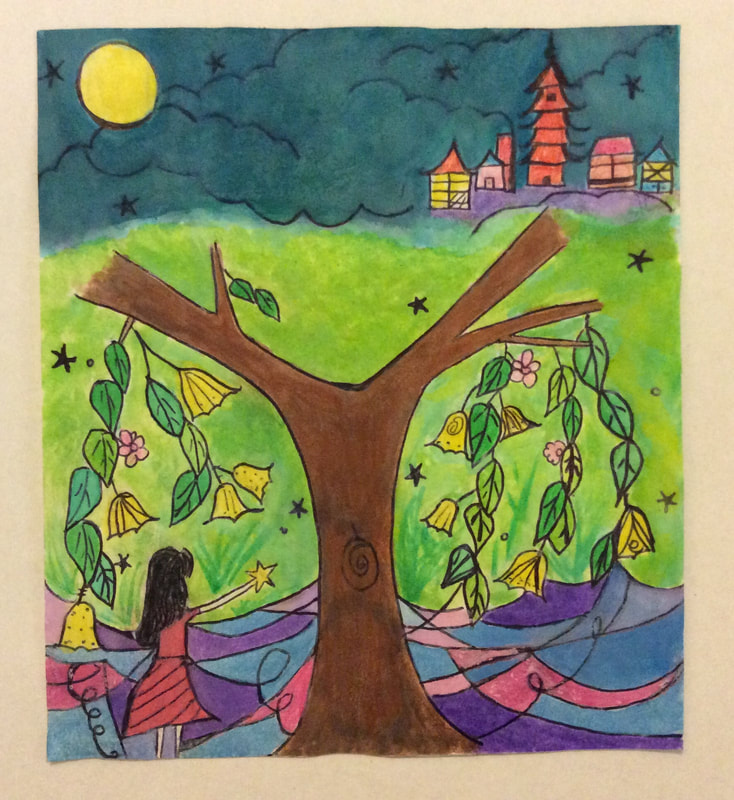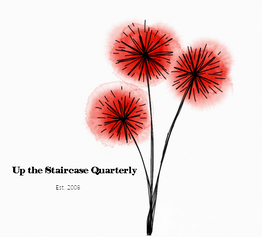Interview with Ha Kiet Chau

Up the Staircase Quarterly: You first appeared in one of our past issues of UtSQ with your poem “Murder a Tree”. This poem also appears in your first full-length poetry collection, Eleven Miles to June (Green Writers Press 2021). I was excited to see how Eleven Miles to June would expand upon the unique idea in “Murder a Tree”. The concepts you ended up producing are complex, utilizing the themes of self-identity, familial identity, and culture in surprising and often colorful ways. Tell us more about the conception of Eleven Miles to June. How did you come about choosing a direction or angle for your manuscript?
Ha Kiet Chau: Eleven Miles to June is about venturing on a journey to reach light, to find home. The conception began in 2010 after I wrote “A Woman’s Warfare” based on my mother’s experience living through the Vietnam War. Her strength and courage inspired me to write and build a collection of poems that explores women’s issues, self-identity, assimilation, culture, empowerment, gender, and social challenges. These themes were important to integrate into my narrative because as an avid reader, I felt they weren't explored enough in Asian literature. I wish to give voice and attention to these topics through my book.
UtSQ: The approach you used to voice these poems, often first-person narrative, and the arrangement and order of the poems throughout the book was affective. You split your poems into three different sections: Close-Up, Wide-Shot, and Fade-Out. I’m curious how Eleven Miles to June’s ideas came together as a whole. What was your process for weaving together these intricate poems into a cohesive arc? From a craft standpoint, did you face a challenge with a particular poem? Which piece came “easiest” to the page?
HKC: My poems tend to have a cinematic feel, unfolding like scenes from a movie. I’m interested in films and the use of angles and lighting to tell a story. When I write, I take different roles as the director and actor—my eyes become the lens of a camera, conveying emotion through specific words, imagery, and sounds. The sections begin in childhood, gradually progressing towards adolescence, and finally adulthood. As for arrangement, I separated the darker pieces from the romantic, dreamy ones. Love poems like “Six A.M. Sunrise” and “A Mélange at 12:19” are easiest to craft. Moodier poems are more challenging, particularly “November 30, 1998” because of subject matter, but I wanted to step out of my comfort zone and tackle all topics in a poetic and artistic way.
UtSQ: These poems often illustrated a quiet sort of violence, correlating human emotion and the environment in a way that is both beautiful and unnerving, as demonstrated in your poem “November 30, 1998”:
The river is dead in December.
Canaries and frogs drift facedown in the water.
I am swimming and drinking the river,
gulp after gulp until I’m so heavy, I sink.
Another favorite example of this mirroring is found in the poem “Broken Aftermath”:
I was a jackrabbit in a meadow, petrified.
Father was an eagle in the sky, infuriated.
I hid behind the calm wings of my mother.
While confronting the complexities of your subject matter, what idea or feeling are you hoping readers take away from this collection?
HKC: I’m attracted to the beauty of nature and the environment, often incorporating trees, mountains, bridges, rivers, and lakes into my poems. I’m also curious about the complexity of human emotions...what makes us laugh, what makes us cry. My book revolves around themes of belonging, loss, displacement, and change. Through poetry, I am able to express and understand myself better. Life is a journey, at times unpredictable, but it is the experiences we encounter, and the lessons we learn that allow us to grow and shape who we are today. I hope readers will relate to my collection and feel motivated to overcome challenges and explore their creativity.
UtSQ: I would love to know more about the brilliant cover art of Eleven Miles to June. Can you tell us about the idea behind the work and how it was selected as the cover?
HKC: I sent my publisher Dede Cummings some of my artwork, mostly done in watercolor. She loved it and we decided on a picture of a woman standing beneath the moon on a magical night, surrounded by a ribbon of colors. My inspiration comes from Chinese & Vietnamese art, blending modern and ancient themes. Since childhood, I’ve been collecting pastel crayons, glittery pens, and paintbrushes. I like to doodle, filling the pages of my sketchbook with landscapes, figurines, and animals. My illustrations are usually vivid and colorful. This is how I envision the world in my mind. When it’s rainy and gray in winter, I would imagine aqua-pink skies and multihued rainbows, weaving these images into my poems.
more artwork by Ha Kiet Chau:
UtSQ: Tell us about your first significant literary encounter. How did this experience inspire you, or shape you, into the writer you have become?
HKC: Growing up, I love to escape into books and transport myself to other worlds. I’m a fan of Beverly Cleary, Ann M. Martin, and Bette Bao Lord. These authors inspire me to create unique stories, characters, and plot. Some books that stood out in my memory are Charlotte’s Web, The Odyssey, Little Women, and The Good Earth. During high school, I developed a strong interest in poetry, studying Whitman, Shakespeare, and Dickinson. I also enjoyed reenacting plays and seeing performances come alive on stage. I use this experience when I write, inventing characters like Blanche and Cruz, Mr. and Mrs. Lee, and the Ziegfeld sisters.
UtSQ: Finally, Ha, if you could have a meal with anyone, dead or alive, real or imaginary, who would it be, and what on earth would the two of you eat?
HKC: I would like to time travel to ancient China and meet poets like Li Qingzhao, Li Bai, and Su Hui. It would be an adventure to roam around a fancy palace in a Hanfu silk robe. I would prepare an outdoor feast for my guests: congee soup, golden fried rice, shrimp dumplings, and lotus cakes. Underneath the sky, we would sip tea and stargaze. In the evening, we would write haikus on scrolls and read them aloud to the moon.
HKC: Growing up, I love to escape into books and transport myself to other worlds. I’m a fan of Beverly Cleary, Ann M. Martin, and Bette Bao Lord. These authors inspire me to create unique stories, characters, and plot. Some books that stood out in my memory are Charlotte’s Web, The Odyssey, Little Women, and The Good Earth. During high school, I developed a strong interest in poetry, studying Whitman, Shakespeare, and Dickinson. I also enjoyed reenacting plays and seeing performances come alive on stage. I use this experience when I write, inventing characters like Blanche and Cruz, Mr. and Mrs. Lee, and the Ziegfeld sisters.
UtSQ: Finally, Ha, if you could have a meal with anyone, dead or alive, real or imaginary, who would it be, and what on earth would the two of you eat?
HKC: I would like to time travel to ancient China and meet poets like Li Qingzhao, Li Bai, and Su Hui. It would be an adventure to roam around a fancy palace in a Hanfu silk robe. I would prepare an outdoor feast for my guests: congee soup, golden fried rice, shrimp dumplings, and lotus cakes. Underneath the sky, we would sip tea and stargaze. In the evening, we would write haikus on scrolls and read them aloud to the moon.
|
Ha Kiet Chau is a Chinese-Vietnamese American writer from Northern California. Her poems have appeared in literary magazines in the US, UK, and Asia. She is a recipient of the UCLA Extension Writers’ Program Scholarship and has been nominated for Pushcart Prize, Best New Poets, and Best of the Net. Her chapbook, Woman Come Undone, was published by Mouthfeel Press in 2014. Ha teaches art and literature in the San Francisco Bay area and helps several youth organizations promote reading and language arts for children. |




